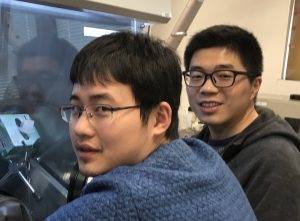Supervisor: A/Prof. Lan Wang

2D materials: Dimensionality plays a crucial role in determining the fundamental properties of materials, which has already been strikingly high-lighted by the discovery of graphene [1]. Graphene has many attractive properties for electronics and spintronics, such as gate-tunable carrier concentration, exceptional high electric mobility (> 105 cm2V-1s-1 at room temperature) and long spin-diffusion length. Other novel 2D materials offer properties that are complementary to those in graphene. The most attractive material systems include the 2D topological surface states in 3D topological insulators and novel 2D semiconductors, such as monolayer and few-layer black phosphorous, 2D transition metal dichalcogenides (MoS2, WSe2, etc), and ferromagnetic 2D materials [2, 3].
Spintronics: Today we stand on the verge of a new era in microelectronics, where the electron’s spin (which is the origin of magnetism) is utilized in addition to its charge. This concept is termed spin-electronics or spintronics and its technological appeal was aptly demonstrated by the Giant Magnetoresistance phenomenon, which moved from discovery to application (modern disk storage) in under a decade. By manipulating electron charge and spin simultaneously, ultra high speed and low power consumption electronic devices with more functionality can be fabricated. Spintronics has already become one the most important research fields in electronics, materials science and condensed matter physics [4].
This project will involve in making ferromagnetic heterostructures based on atomic layer thick 2D materials, fabricating various spintronic devices based on these heterostructure, and performing electron and spin transport measurements on these devices. Students with strong physics background are preferred.
The aim of this project will be fabricate the next generation low energy spintronic devices, such as spin field effect transistors and spin transfer torque devices for magnetic random access memory (MRAM) application.
References:
[1] K. S. Novoselov et al., Science 306, 666 (2004) [2] Q. H. Wang, et al., Nature Nanotech. 7, 699 (2012) [3] M Chhowalla, et al., Nature Chem. 5, 263 (2013) [4] [4] S. Maekawa Concepts in spin electronics, Oxford University Press, 2006
Contact Details:
To discuss this project further contact: Associate Professor Lan Wang (lan.wang@rmit.edu.au) 1st Supervisor – Office building 14, Level 6, room 14

